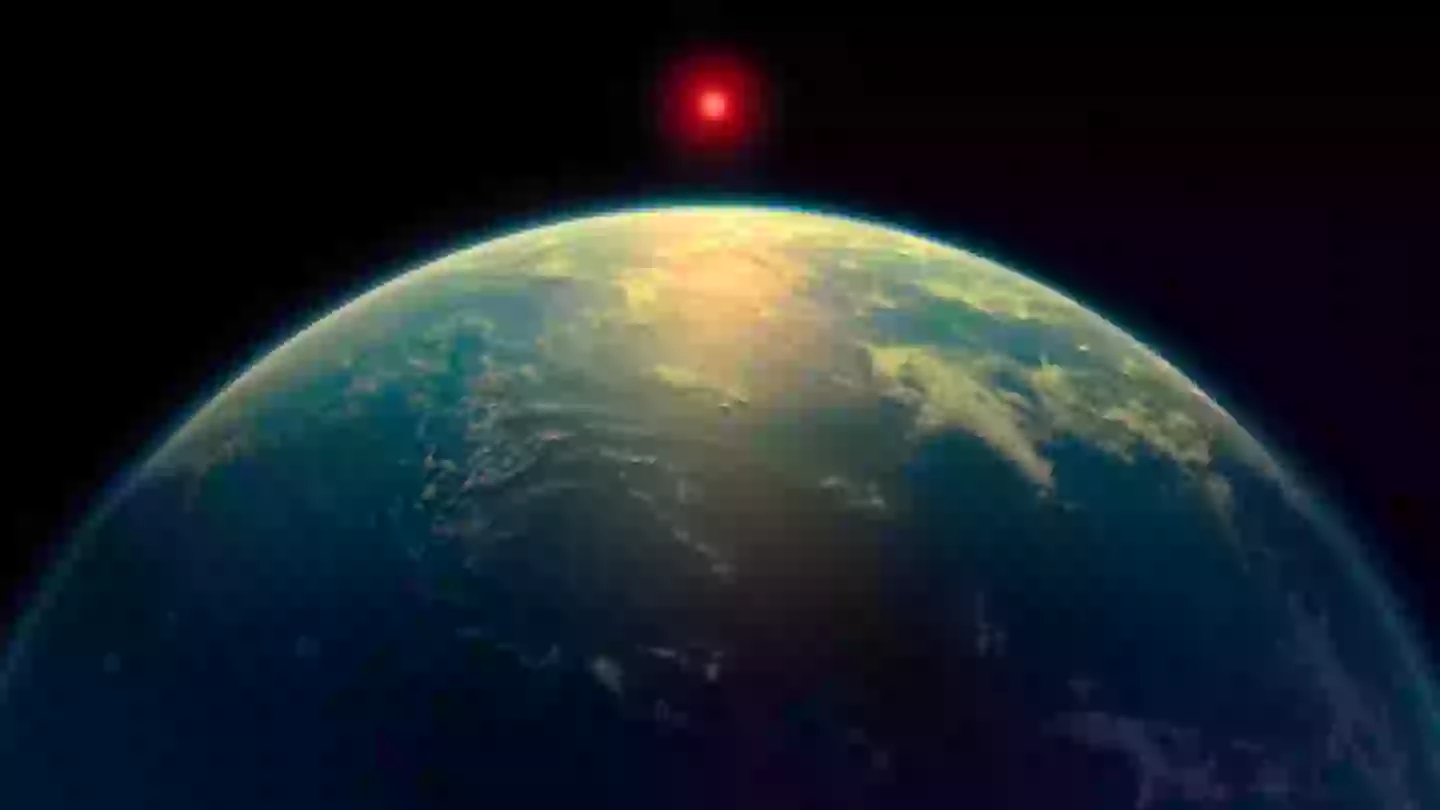
Scientists have discovered there's a very high chance of life on a planet that sits 700 trillion miles away from Earth.
Recently, a team of British scientists announced they found what they believed to be the 'strongest evidence yet that life may exist on a planet outside our solar system', on the planet K2-18b.
K2-18b is around 120 light years from Earth and is three times as large as our home.
Advert
It also sits within the habitable zone of its star, meaning it has just the right temperature for liquid water on its surface.
If so, K2-18b could make for a Hycean world, according to the study published in The Astrophysical Journal Letters, which means it has the potential to be habitable, from its water to a hydrogen-rich atmosphere, which certainly sounds promising.
.webp)
How did the scientists discover life?
Astronomers from the University of Cambridge, UK, claim to have discovered signs of a possible biosignature, or signs of past or present life linked to biological activity.
Advert
They found this by utilising data from NASA's James Webb Telescope which found 'chemical fingerprints of dimethyl sulfide (DMS) and/or dimethyl disulfide (DMDS)'.
For those that don't know, DMS and DMDS are only produced by life, with both molecules on Earth coming from microbial life like marine phytoplankton, hence the frenzy around the discovery.
What have scientists said about the discovery?
Professor Nikku Madhusudhan from Cambridge’s Institute of Astronomy, who led the study, said: "Earlier theoretical work had predicted that high levels of sulfur-based gases like DMS and DMDS are possible on Hycean worlds.
Advert
"And now we’ve observed it, in line with what was predicted. Given everything we know about this planet, a Hycean world with an ocean that is teeming with life is the scenario that best fits the data."
While undoubtedly a scientific breakthrough, the researchers are still erring on the side of caution while they conduct further research.
"We didn’t know for sure whether the signal we saw last time was due to DMS, but just the hint of it was exciting enough for us to have another look with JWST using a different instrument," Professor Madhusudhan added.
Still, they're pretty optimistic about the discovery.
Advert

What could life on K2-18b look like?
Far from the alien image you might have in your head, scientists say life on the far, far away planet would look extremely different.
Speaking to the MailOnline, Dr Arik Kershenbaum, a zoologist from the University of Cambridge and author of The Zoologist's Guide to the Galaxy, said it would likely be a very simplistic form.
Advert
He explained: "Even if there is an ocean on this planet it's going to look more like what Earth looked like three or four billion years ago when life first evolved.
"So, one thing we can say pretty confidently is that the vast majority of planets that have any sort of life on them are going to have simple life on them."
Dr Kershenbaum added: "By simple I just mean simple interactions and a very simple ecosystem. So, you might have organisms that capture light from the star like plants do on our planet and then, as they die and sink down in the water there might be some organisms that eat the dead creatures.
"That's probably what life was like on Earth around two billion years ago."
Astronomer Michael Garrett, a professor at Manchester University, also suggested that if the star around K2-18b gets light from is a red dwarf, then the life on the planet might have eyes that are 'much more sensitive and larger than ours'.
Topics: Space, Science, World News, Aliens